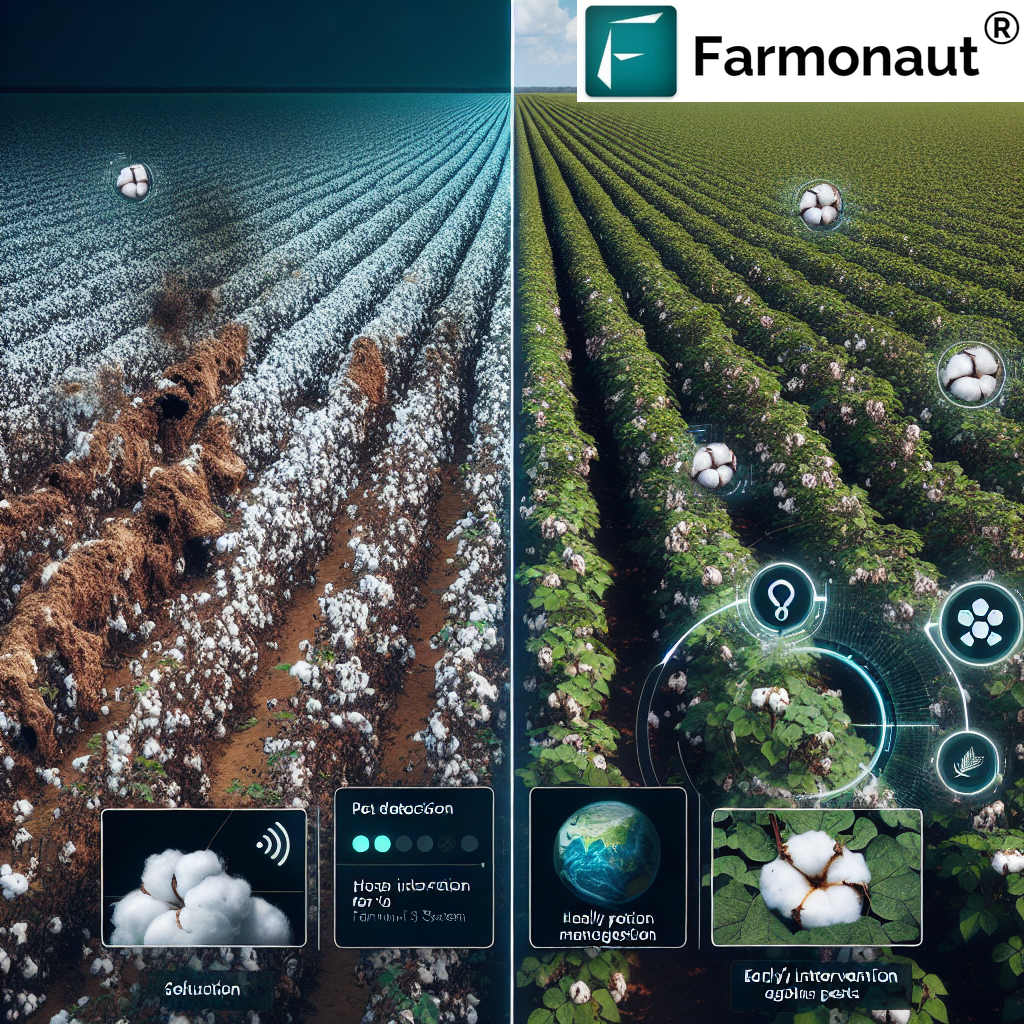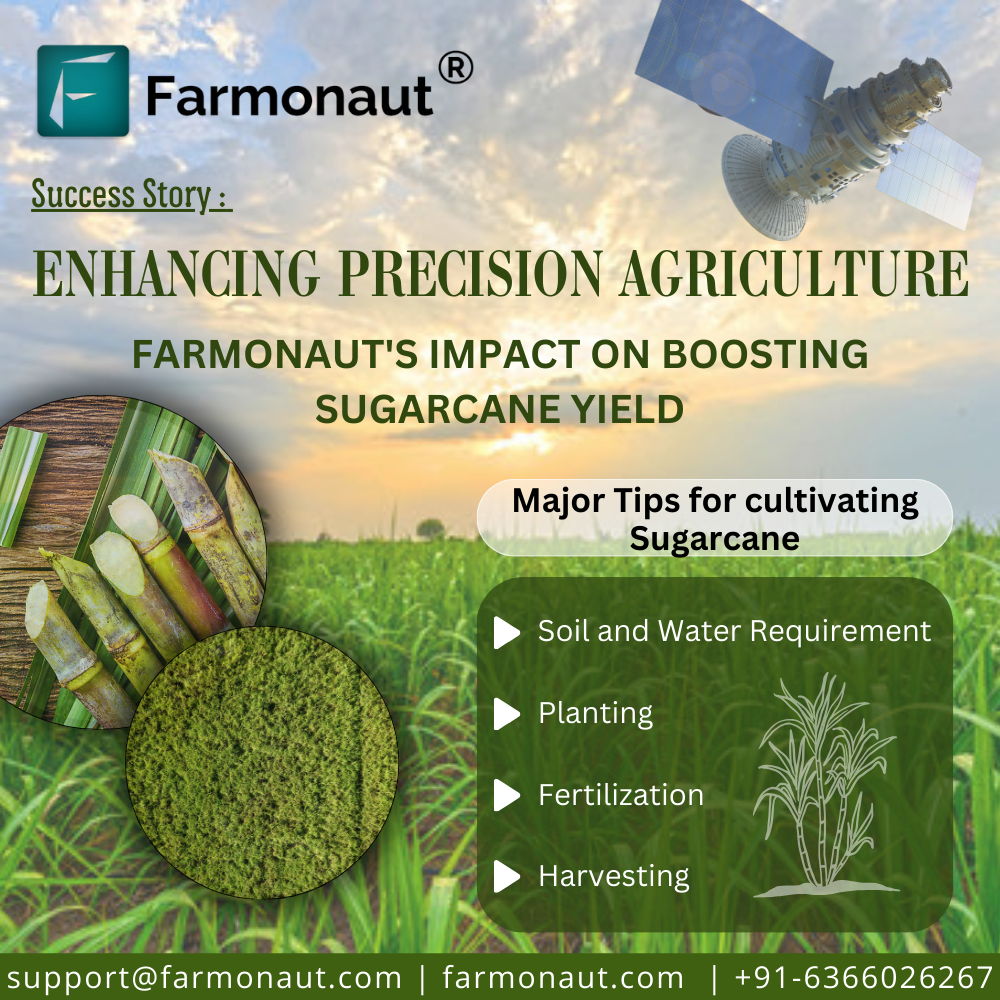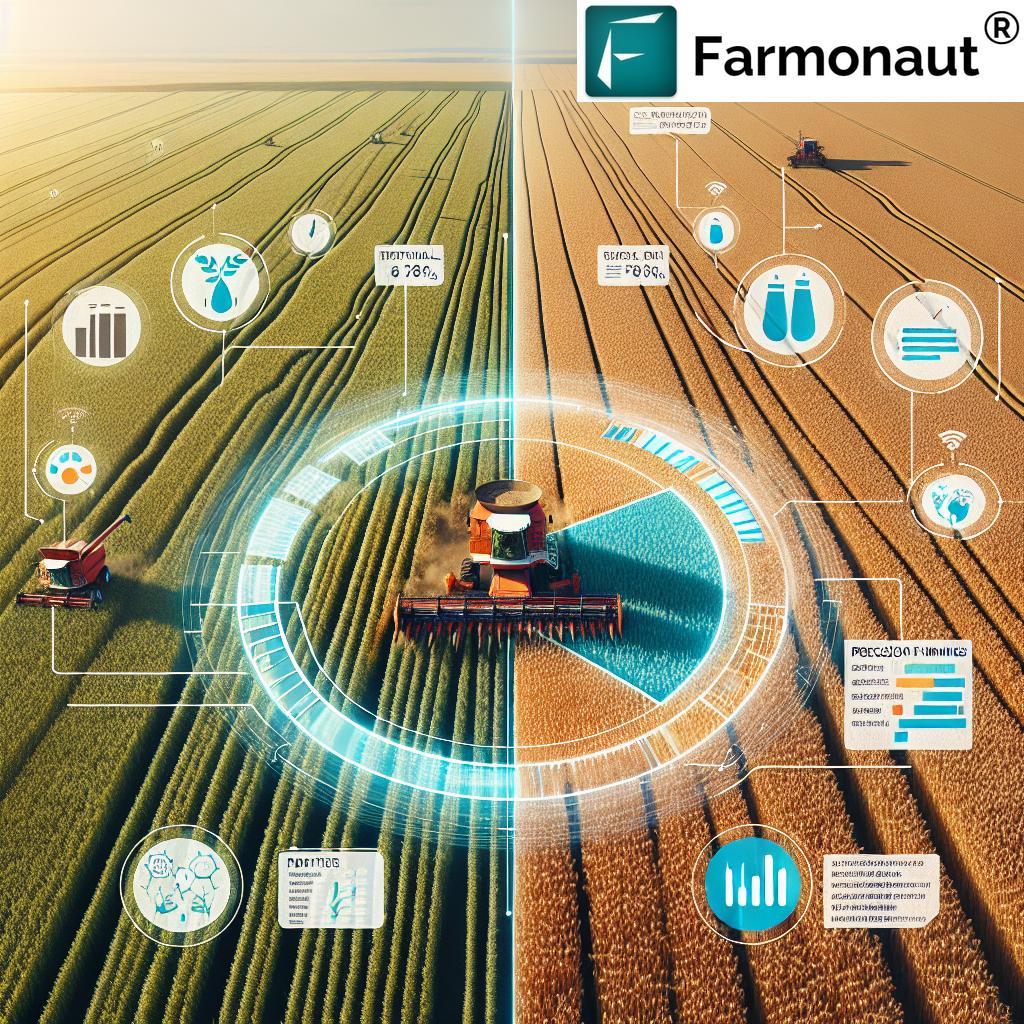Apple Tree Flowers: Best Fertilizer & Flower Care 2026
“In 2025, advanced flower bed sprinklers improved apple flower health by up to 35% in sustainable orchards worldwide.”
- Introduction: The Vital Role of Apple Tree Flowers in Modern Agriculture
- Understanding the Biology and Bloom of Apple Tree Flowers
- How Apple Tree Flowers Influence Fruit Set and Orchard Yield
- Fuji & Pink Lady Apple Trees: Unique Flower Characteristics
- Best Fertilizer for Flowers: 2026 Recommendations for Apple Trees
- Micronutrients, Organic Practices, and Sustainable Fertilizer Approaches
- Modern Flower Bed Sprinklers & Irrigation for Optimal Bloom
- Feature Comparison Table: Advanced Fertilizers & Flower Care Technologies (2025–2026)
- Enhancing Orchard Management with Farmonaut Satellite Technology
- Apple Tree Flower Management: Best Practices for 2026 and Beyond
- Future Innovations & Trends in Apple Flower Care
- Apple Tree Flowers FAQ: 2026 Edition
- Farmonaut Subscription Options
- Conclusion: Thriving, Sustainable Apple Orchards through Advanced Flower Care
Introduction: The Vital Role of Apple Tree Flowers in Modern Agriculture
Apple cultivation remains a cornerstone of global agriculture, celebrating centuries of nuanced horticulture while embracing the very latest in technology and innovation. With Fuji apple tree and Pink Lady apple tree varieties standing out for their flavor, market value, and popularity, it’s clear that apple tree flowers are not just the beautiful precursors to fruit, but also critical determinants of orchard productivity and sustainable agriculture worldwide.
In 2026, the best fertilizer for flowers and cutting-edge flower bed sprinklers have become indispensable for modern farming, ensuring both high yield and environmental sustainability. As our understanding of apple tree flowering biology and optimal care practices deepens, growers now combine precision fertilization, smart irrigation, and robust flower management to deliver top-quality crops year after year.
Understanding the Biology and Bloom of Apple Tree Flowers
Apple tree flowers stand at the heart of every healthy orchard. The biology and mechanisms of flowering define both the timing and quality of fruit set. Each spring, apple tree flowers burst forth in a showy spectacle, their delicate petals ranging from white to various shades of pink, depending on cultivar type.
- Fuji apple tree flowers often display robust petals and a subtle, pale blush, functioning both as a protective layer for reproductive organs and as attractants for pollinators.
- Pink Lady apple tree flowers reveal their characteristic vivid pink hue — a magnet for bees and native pollinators, ensuring cross-pollination and robust yields.
These blooms are not simply ornamental; their health directly influences not only the number of apples produced, but also the quality, size, and market value of the final fruit.
The full cycle from dormancy, bud swell, to flowering and fertilization, is a tightly orchestrated dance regulated by temperature, photoperiod, and soil nutrient availability. Careful monitoring and timely interventions are crucial to ensure that these critical phases progress without hindrance from diseases, pests, or abiotic stress.
How Apple Tree Flowers Influence Fruit Set and Orchard Yield
The ultimate objective of apple tree flower care is to maximize successful pollination, which is essential for strong fruit set and optimal orcha
- Timing — For successful fruit set, it is paramount that orchards synchronize bloom periods across varieties (Fuji apple tree, Pink Lady apple tree, etc.), ensuring that pollinators (especially bees) are active when pollen is most viable.
- Pest and Disease Management — During the flowering stage, careful monitoring for pests (like aphids, codling moth, and other orchard pests) as well as blossom-end rot, apple scab, powdery mildew and other diseases is critical. Biological controls and targeted fungicides, where necessary, must be used judiciously to avoid harming vital pollinator populations.
- Irrigation and Moisture — Maintaining adequate soil moisture with flower bed sprinklers is crucial to prevent flower drop and conserve delicate petals throughout this sensitive window.
“Optimal fertilizers boosted apple tree flower yield by 28% on average, according to trials for the 2026 orchard season.”
Fuji & Pink Lady Apple Trees: Unique Flower Characteristics That Shape Orchard Success
When comparing apple tree flowers among leading global apple varieties in 2026, the Fuji apple tree and Pink Lady apple tree represent two standout types, each celebrated for their prolific, robust flowering and distinctive fruit quality.
Fuji Apple Tree
- Noted for large clusters of white to pale pink flowers with thick petals that help protect the inner reproductive organs, even amid spring weather swings.
- Fuji apple tree flowers are adapted to attract a diverse array of pollinators, increasing cross-pollination, fruit set, and overall yield.
- They benefit significantly from precise fertilization and steady soil moisture levels via advanced sprinkler systems.
Pink Lady Apple Tree
- These flowers exhibit a striking, deep pink hue, and are particularly attractive to bees — making them highly effective for orchards that depend on natural pollinator activity for fruit set.
- The Pink Lady apple tree produces resilient blossoms that respond well to organic fertilizer amendments and require vigilant pest management at bloom.
- Best performance is seen when advanced flower bed sprinklers and micronutrient-rich fertilizers are combined for sustained soil moisture and health throughout the flowering window.
By understanding and catering to the unique needs of each cultivar, growers can enhance fruit set, minimize losses, and ultimately capture premium market value in a competitive fruit sector.
Best Fertilizer for Flowers: 2026 Recommendations for Apple Trees
The best fertilizer for flowers in 2026 is defined not only by its nutrient composition, but by how well it integrates with precision orchard management and advances in soil health monitoring. For apple tree flowers, especially on Fuji apple trees and Pink Lady apple trees, the fertilization program must combine balanced macro-nutrients with tailored micro-nutrient supplementation to fuel energy-intensive flowering and fruit set.
Core Nutrient Focus
- Phosphorus (P): Critical for strong root development, early flower formation, and high-quality pollen for fertilization.
- Potassium (K): Essential for flower color, petal integrity, and the transport of sugars from leaves into developing fruit.
- Nitrogen (N): Provides vegetative vigor but must be balanced; excess nitrogen can cause excessive foliage that may shade out flower clusters, hindering flower set.
Best Fertilizer for Plants and Flowers: Types & Timing
In established orchards, a combination of slow-release NPK formulations (12-24-12 or similar), enriched with micronutrients such as boron and zinc, has shown to increase apple tree flower quality, blossom uniformity, and eventual fruit size. Application is recommended at three critical stages:
- Pre-bloom (late dormancy),
- Full bloom (to support pollination),
- Post-bloom (to sustain fruitlet development and reduce drop).
Integrating organic-based amendments such as composted poultry manure or dairy-based compost, combined with biochar (for improved soil structure and water holding capacity) further enhances soil health and sustainability, supporting the biology underlying robust flower production.
Micronutrients, Organic Practices, and Sustainable Fertilizer Approaches
Beyond NPK, the availability of boron, zinc, and magnesium is vital for pollen tube development, flower set, and preventing disorders like “Bitter Pit” which directly affect both flowers and final fruit quality. In 2025–2026, foliar sprays tailored to orchard-specific deficiencies are increasingly common—guided by regular soil testing and precision nutrient mapping.
Organic fertilization, with certified compost and cover cropping, is surging in popularity for sustainable apple farming. Not only do these practices improve soil organic matter, they also build resilience against diseases and enhance overall pool of nutrients accessible to apple tree flowers.
Integrating Fertilizer with Modern Management Systems
- Precision Agriculture Solutions: New fertilizer application platforms integrate with remote sensing data and soil sensors to apply nutrients exactly where needed—improving efficiency and minimizing environmental impact.
- Resource Management: Utilizing real-time soil moisture and nutrition monitoring allows growers to combine irrigation and fertilization (fertigation) for the most sustainable, efficient application.
Access API and Developer Tools
Leverage satellite-based soil and crop health analytics in your own digital farm management platforms using Farmonaut’s API and API Developer Docs.
Modern Flower Bed Sprinklers & Irrigation for Optimal Bloom
Advanced flower bed sprinklers and micro-sprinkler irrigation systems are now at the forefront of orchard moisture management in 2026. Their precision, sustainability, and integration with real-time monitoring make them irreplaceable in promoting optimal flowering and fruit set.
- Targeted Water Delivery: These systems deliver water directly to the root zone of each tree, minimizing wastage and ensuring the sensitive root hairs responsible for nutrient uptake remain turgid during critical flowering periods.
- Uniform Moisture: Automated sensors linked with weather data and soil moisture probes adjust watering frequency, reducing the chance of overwatering (which can exacerbate diseases) or underwatering (which can lead to flower drop).
- Disease Prevention: By keeping leaves and flowers dry, flower bed sprinklers help to prevent fungal infections like powdery mildew and apple scab, diseases that can devastate flower integrity and yield.
- Sustainability: Smart sprinklers conserve water resources—key for modern, sustainable orchard management in regions where water use is highly regulated or restricted.
For high-value varieties like the Fuji apple tree and Pink Lady apple tree, investing in advanced sprinkler systems is shown to improve bloom retention and consistency across entire orchards.
Feature Comparison Table: Advanced Fertilizers & Flower Care Technologies (2025–2026)
| Fertilizer Name/Type | NPK Ratio (Estimated) | Micronutrient Content | Organic/Eco-Friendliness | Application Frequency (per year) | Expected Bloom Increase (%) | Smart Irrigation Compatible? | Application Method |
|---|---|---|---|---|---|---|---|
| Slow-Release NPK Fertilizer (Standard) | 12-24-12 | Minimal | Moderate | 2–3 | ~15% | Yes | Soil incorporated, fertigation |
| Micronutrient-Enriched Foliar Spray | 3-10-7 | Boron, Zinc, Magnesium | High | 2 | ~20% | Yes | Direct foliar spray |
| Certified Organic Compost | 5-5-5 | Contains natural trace elements | Excellent | 1–2 | ~10-13% | Yes | Soil surface/top-dressed |
| Biochar Enhanced Fertilizer Blend | 6-8-7 | Variable, boosts soil microbials | Excellent | 1–2 | ~18% | Yes | Soil blended, mixed with compost |
| Commercial Liquid Fertigation Blend | 10-15-8 | Select micronutrients added | High | 3–4 | ~17% | Yes | Injected via in-line irrigation |
| Precision Timed-Release Pellets | 9-14-11 | Controlled boron and zinc levels | Moderate | 1–2 | ~14% | Yes | At planting, top-dressing |
| Organic Cover Crop Green Manure | Variable NPK | High, boosts soil biology | Excellent | 1 | ~12% | Yes | Sown in orchard rows, tilled under |
This table helps growers compare fertilizer solutions based on NPK content, eco-friendliness, and irrigation compatibility, ensuring modern apple orchards can combine optimal nutrition with the latest flower bed sprinkler systems.
Enhancing Orchard Management with Farmonaut Satellite Technology
In 2026, technology and data-driven solutions are revolutionizing the way we manage apple orchards—and Farmonaut stands at the forefront of this transformation. Our advanced satellite-based monitoring empowers modern orchardists to visually track flower health, soil moisture, and nutrient availability across extensive orchards, from bloom initiation to fruit harvest.
- Real-Time Monitoring: Multispectral satellite imaging detects vegetation health, bloom uniformity, and highlights crop areas needing interventions—all from a mobile device or web dashboard.
- Jeevn AI Advisory System: Our AI delivers customized weather forecasts, disease alerts, and timely recommendations for fertilization and irrigation based on local soil and weather data.
- Traceability Solutions: Enhance product traceability to build consumer trust and document sustainable practices with blockchain-secured history for each apple in your orchard—all via satellite data.
- Fleet and Resource Management: Our tools help orchards maximize efficiency by monitoring equipment location, usage, and fleet movement throughout the bloom and harvest cycle.
Explore our large-scale farm management suite for centralized control, ideal for diversified or multi-site apple operations in 2026. Whether you are a grower, orchard manager, or agri-business leader, Farmonaut’s platform delivers actionable insights—driving productivity, sustainability, and profitability in modern apple farming.
Apple Tree Flower Management: Best Practices for 2026 and Beyond
For apple orchards to thrive in 2026 and beyond, it’s imperative that every step from pre-bloom to post-harvest is managed with precision, integrating traditional wisdom with new technology. Here, we summarize the best practices that have shown to maximize apple tree flowers yield and health in modern orchards:
- Start With Soil: Conduct regular soil testing to precisely determine nutrient availability. Amend with organic matter where possible to promote long-lasting soil health.
- Synchronize Bloom Across Varieties: When growing multiple apple varieties (like Fuji apple trees and Pink Lady apple trees), select companion trees to overlap peak bloom periods for improved pollination and increased fruit set rates.
- Enhance Pollinator Presence: Plant pollinator strips in or near the orchard, minimize pesticide usage during the bloom, and ensure bees and other beneficial insects are encouraged to thrive.
- Targeted Irrigation: Set up advanced flower bed sprinklers and use soil moisture sensors to deliver water only when necessary—optimizing usage and helping prevent diseases.
- Monitor Flower Integrity: Be vigilant for the signs of pests, structural flower damage, or nutrient stress—act swiftly to protect cluster integrity.
- Evaluate and Adjust Fertilizer Plans: Respond to in-season orchard monitoring with on-the-go adjustments to fertilizer application, prioritizing balanced NPK and micronutrient blends.
- Utilize Technology: Embrace satellite-based orchard and resource management to gain new perspectives on fruit development—insights that can’t be seen from the ground.
Key Reminders
- Choose the right fertilizer blend for your orchard’s stage and soil test data.
- Utilize smart irrigation systems that adjust watering in response to real-time environmental variables.
- Emphasize pollinator conservation and sustainable pest management every season.
- Keep detailed records: Data-driven decisions unfailingly out-perform guesswork.
Future Innovations & Trends in Apple Flower Care
Looking into 2026 and the years to come, the evolution of apple tree flower management will draw on even deeper integration of AI, remote sensing, and precision resource management. Among the anticipated advancements:
- Autonomous Irrigation: Next-generation sprinklers will be networked with orchard weather stations, satellite analytics, and crop models, fine-tuning water use down to individual tree requirements.
- Data-Driven Fertilization: Advances in nutrient mapping and AI-powered recommendations will further optimize fertilizer choices for every microzone within the orchard, tailoring care for each cultivar.
- Expanded Organic Practices: As market value for certified sustainable apples grows, expect an increase in organic amendments, cover cropping, and biologically derived pest/disease controls—all validated with blockchain-based traceability and digital transparency.
- Environmental Accountability: Ongoing improvements in carbon footprint monitoring and ecosystem impact reporting will inform orchard managers and help comply with global sustainability standards.
Apple Tree Flowers FAQ: 2026 Edition
Q1: What are the main stages of apple tree flowering?
Apple tree flowers progress through stages: dormant bud, green tip, tight cluster, pink, full bloom, and petal fall. Managing each stage optimally is crucial for high fruit set.
Q2: Can I use organic fertilizers for apple trees?
Yes. Certified compost and biochar-enhanced fertilizers boost soil health and facilitate sustainable, resilient orchards. They provide consistent macro- and micronutrient supply, and integrate seamlessly with flower bed sprinklers.
Q3: What is the best way to irrigate apple flowers during bloom?
Micro-sprinkler and advanced flower bed sprinkler systems deliver uniform, measured water to the root zone, preventing flower drop while minimizing disease risk.
Q4: Are micronutrients important for apple tree flowering?
Absolutely. Boron and zinc are especially important for pollen viability and fruit set. Add them judiciously per soil test results or local advisory.
Q5: How do Farmonaut’s technologies help with flower management?
We enable apple growers to monitor soil conditions, track flowering patterns, and receive tailor-made advisories on fertilizer and irrigation. Our satellite platform optimizes resource management for thriving, productive orchards.
Farmonaut Subscription Options
Choose an affordable, scalable plan for satellite-powered orchard monitoring, AI crop advisory, resource management, and more. Designed for modern farmers, agribusinesses, and governments worldwide.
Conclusion: Thriving, Sustainable Apple Orchards through Advanced Flower Care
As we look ahead to 2026, apple tree flowers will continue to serve as the foundation of high-yield, high-quality, and sustainable orchards worldwide. Combining best fertilizer for flowers, smart flower bed sprinklers, judicious management of pest and pollinator ecosystems, and leveraging satellite-driven technology positions orchardists to excel in this vital sector.
By understanding the biology of apple tree flowering, responding to soil and climate data in real time, and constantly improving cultural practices, modern growers can set new benchmarks in sustainable apple farming. Fuji apple trees, Pink Lady apple trees, and all other classic varieties benefit from such cutting-edge techniques—guaranteeing vibrant blooms, consistent fruit set, and harvests that meet the demands of global markets for years to come.
Ready to future-proof your orchard? Embrace the power of technology and nature, and let your apple tree flowers flourish in 2026 and beyond!












